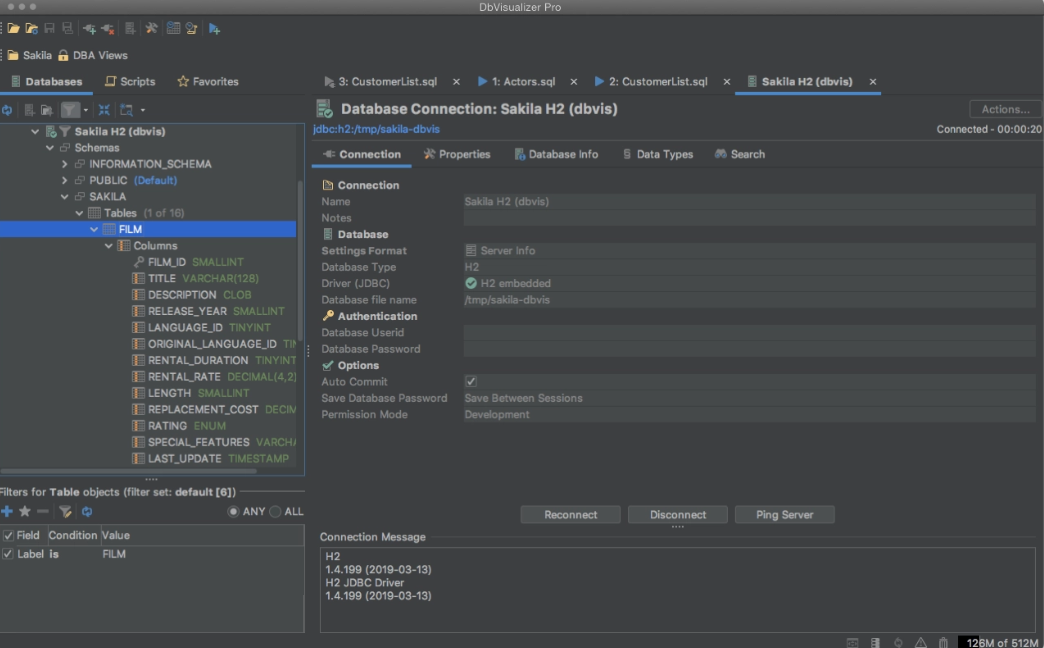Introduction

DbVisualizer utilizes modern tools to enhance the experience of building, understanding, managing, and maintaining databases, helping to generate and optimize SQL queries, use variables in SQL statements, compare queries, generate E-R graphs, manage specific objects of the database, edit data tables (such as spreadsheets), create monitors, use CLI, and more.
DbVisualizer can connect to all mainstream databases and support database specific object types.
System requirements: OS support: Windows 64 bit 11/10/8/7, Windows ARM64 11, Linux, macOS10.11+. Windows: requires Java 17; MacOS: Java 17 required; Linux: Java 17 required
DbVisualizer has built-in JDBC driver management. It uses JDBC drivers hosted on Maven, web servers, local files to connect you to the database, and even supports different versions of each JDBC driver.
Provide DbVisualizer Free (free version) and paid DbVisualizer Pro (professional version)

Major function
DbVisualizer has everything you need to build, manage, and maintain mainstream databases. Each function has been designed to solve real-world problems.
DbVisualizer is a multifunctional product that can basically help users solve all problems related to database work. From the perspective of users, they do hope to solve a series of problems, some of which often arise, and they need to obtain the necessary tools and hope to avoid repetitive work, which is the significance of DbVisualizer functionality.
With the help of simple data visualization, query tools, inline data editing and export functions, you can obtain everything you need to manage data.

Operating environment
It can run on Windows, macOS, and Linux. The minimum system requirements for running DbVisualizer are Java17, 2GB of RAM, and 300MB of disk space.
Detailed introduction
DbVisualizer is a cross platform database tool suitable for all mainstream databases. Developers, database administrators, and analysts can use DbVisualizer to build, understand, manage, and maintain their databases through the JDBC driver, and use DbVisualizer to generate and optimize SQL queries, use variables in SQL statements, compare queries, generate ERDs, manage specific objects in the database, edit data tables (such as spreadsheets), create monitors, use CLI, and more.









